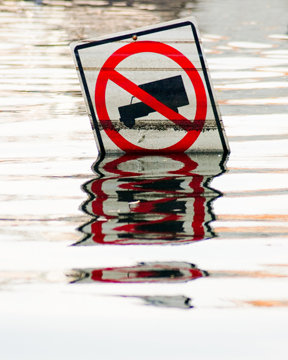First came the clouds. Then came the rain. Followed by more rain. Next thing, there were two feet of water in the basement, which soon gave way to mold and mildew.
After last month’s rainstorms, thousands of homeowners on the East Coast had to deal with flooded homes and wrecked property, including a few in Secaucus. After the March 14 nor’easter hit Secaucus, Mayor Michael Gonnelli said that a handful of residents experienced damage due to wind, downed power lines, and flood damage.
One resident whose home escaped damage this time understands how difficult it can be to recover from a flood, as she has seen her house flooded four or five times before improvements were made to the area.
Start clearing away mud, tree twigs, and other debris while it’s still damp.
________
Prigg said it takes long hours spent sorting, tossing, and cleaning damaged belongings. The possibility of mold is high.
“As bad as it is, you gotta move it out, ’cause if you don’t, it just gets worse,” said Prigg.
What to do
Not everyone automatically knows what to do or where to turn after a flood has destroyed and washed away their belongings.
The American Red Cross and FEMA both offer practical and useful advice for people who have been flooded out of their homes.
First, they recommend that residents use extra caution when reentering their homes. Make sure PSE&G has said it’s safe to reenter since the flood may have led to a gas leak or electrical problem in the home. Ask the utility company to turn off the electrical breaker also.
“If you get flooded like I was, you’ve got to get the water out of there before you can do anything else,” Prigg said. “You’ve got to let that drain out.”
Experts say it’s better to let the water recede on its own, and the New Jersey Department of Homeland Security cautions against the overuse of pumps since they can cause walls and floors to buckle.
Once the water has been drained, reenter the home carefully. Be mindful of any structural damage to the property, or members of the animal kingdom – rats, mice, giant flying cockroaches – that may have taken up residence in the home after the flood.
(If there are structural problems, by the way, FEMA tells people not to enter the house; find a licensed contractor to make some preliminary repairs first.)
After entering the home for the first time, unplug all electrical items, just to be extra safe.
Document it
Depending on the amount of damage and the circumstances of the flood, people may be entitled to reimbursement from an insurer, government grants, or restitution from the property owner. Being able to prove the extent of the damage will be critical to getting paid.
So it’s also recommended that people be prepared to document how high the water was, which items were damaged, etc. Take photos or video footage of the damage before cleaning up.
Get the mud out
Separate items that can be saved from things that were ruined. Keep in mind, the sooner and faster the clean-up begins, the more likely it is that items can be saved. Toss out items that are beyond repair or use, and try to dry out belongings that will be cleaned and kept.
Start clearing away mud, tree twigs, and other debris while it’s all still damp.
If such furniture as beds, sofas, or futons were saturated, throw them away because they’ll become breeding grounds for mold and bacteria. Furniture made of wood, plastic, or metal have a better chance of being cleaned and saved.
Soaked rugs – including wall-to-wall carpeting – will need to be taken up and scrubbed with hot water and pine-oil. Let them dry in the sun, then try to have them professionally cleaned. Get rid of carpet padding.
Floors will need to be cleaned with water and pine-oil (wood) or water and ammonia. A licensed contractor should inspect the flooring to see if any of it needs to be replaced.
Insulation and wallboard will have to be removed since, like the family sofa, they too, can lead to mold and bacteria.
And although it should go without saying, wear protective clothing – thick boots, thick socks, gloves, a mask – before handling soggy, moldy items.
Professional repairs
Prigg has some other practical advice for people recovering from major water damage.
“If you want to hire people to come in and make repairs, make sure they are reputable [and licensed],” she said. “You don’t want somebody coming in and ruining the house more, adding insult to injury.”
E-mail E. Assata Wright at awright@hudsonreporter.com.
